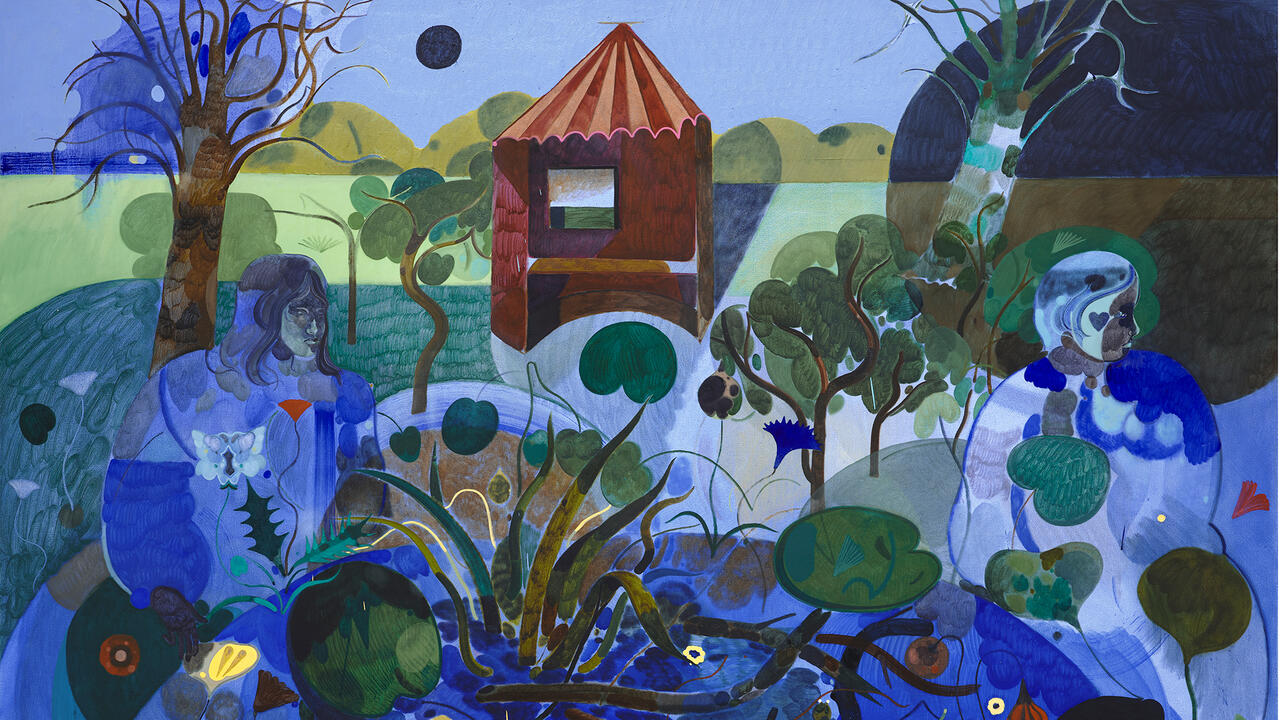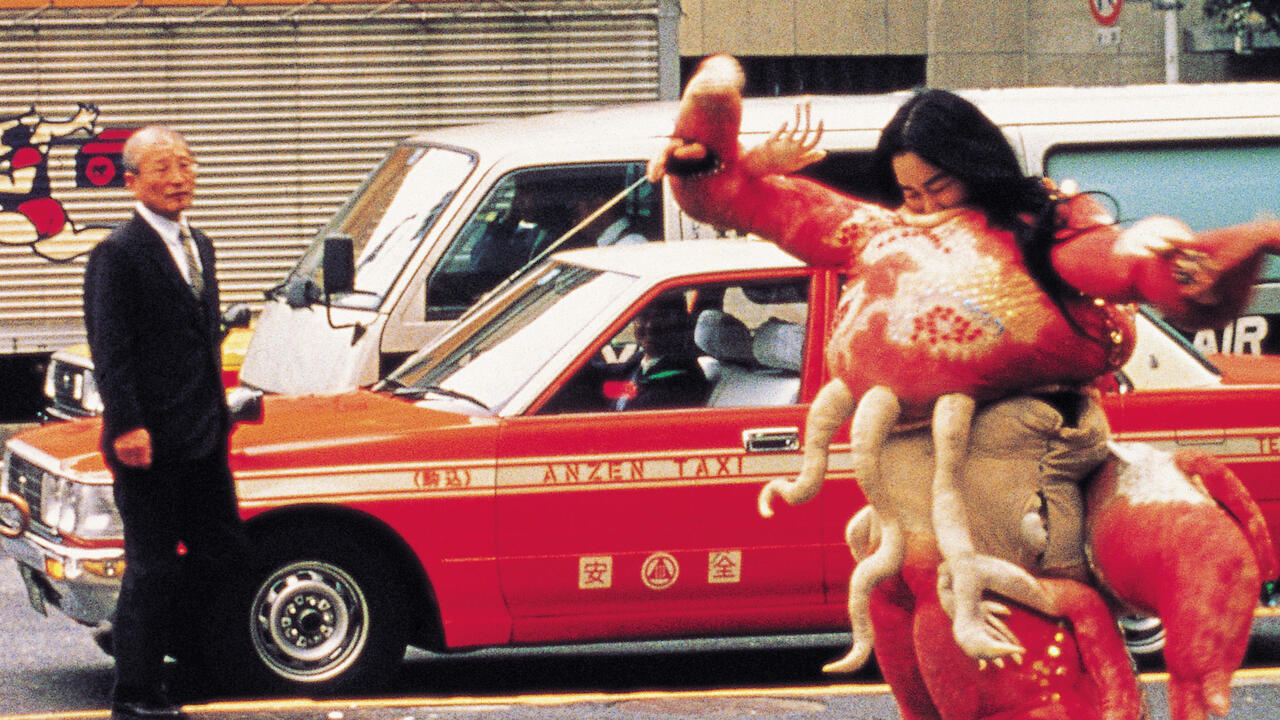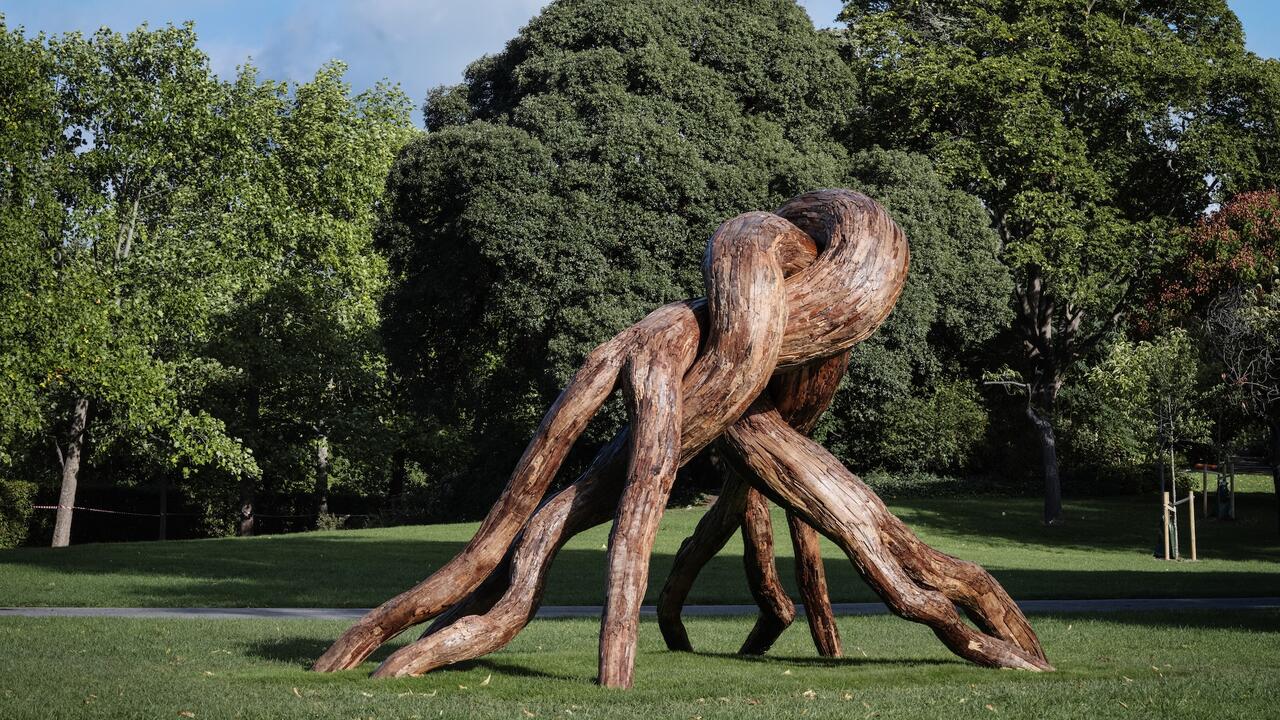Omer Fast
Martin-Gropius-Bau, Berlin, Germany
Martin-Gropius-Bau, Berlin, Germany

Omer Fast’s retrospective at Martin-Gropius-Bau, ‘Talking is not always the solution’, is aptly titled considering today’s fractious political climate. The exhibition begins with Fast’s breakthrough work, CNN Concatenated (2002): a pre-YouTube super-cut of cable news anchors assembled together word by word to morph a set of individual broadcasts into a combined melancholic monologue. ‘How did we get to this point?’ stutter the various talking heads: ‘Where did we go wrong?’ Somehow the sentiment, expressed by fleeting headlines over a decade old, rings as true as ever.

This early piece signals a strong current that runs throughout an impressive body of nearly 15 years of film and video works: Fast’s crafty undermining of film’s verisimilitude. Through skilful editing and increasingly intricate narratives, Fast fastidiously constructs layers of artifice over the existing artifice that already defines our contemporary reality. The takeaway – that no single account of events can be true – once seemed cynical to me, but now feels right, and prescient.

In the show, Fast’s works are screened in environments constructed to resemble airport terminals and doctor’s waiting rooms, as well as in black boxes. The path through the exhibition traces Fast’s evolution from video artist to fully fledged film-maker. The second room catapults us forward into 2016’s Spring, projected on five screens arranged as one, which reveals how Fast’s plot structures and production values have developed over time. With its overtones of sex, suspense and violence, the feel of Spring is one of a premier cable TV series. It stars a troubled teenage boy who closely recalls the central figure of Fast’s tour de force at dOCUMENTA 13, Continuity (2012). Like its predecessor, the story reprises a palpably tense narrative, played out in a claustrophobic generic German town, which posits the notion that a teenager is acting under the influence of a terrorist cell. In the work, as in Fast’s exhibition as a whole, narrative threads are continuously tangled and untangled; time loops and doubles back, and there is a deliberate lack of resolution. In the works that follow Spring in the show – 5000 Feet is the Best (2011) and Continuity – I was surprised to find that the undertones of threats of terror or war, which I had always considered to be central facets of Fast’s practice, now seemed like red herrings for the dominant themes of latent family secrets and psychosexual dynamics.

In the final part of the show, the works shift thematically to focus on Fast’s interest in cinematic effects and devices: the way they can be used to create something close to reality, and then to undercut it. Instead of using war or violence as a narrative vehicle, here Fast drills down into trades of fabrication, production and animation – the various arts of making something look like what it’s not. Looking Pretty for God (After G.W.) (2008) focuses on an undertaker explaining how make-up can be used to make a dead body appear more alive, with his testimony sometimes voiced by child actors: ‘When people say she looks like she’s sleeping, that’s the best compliment you can get.’ The funeral director talks about his past as a sculpture student, adding yet another metaphorical layer: the role of art-making in disrupting truth. The exhibition’s final work, Everything that rises must converge (2013), simultaneously presents four sometimes divergent stories of porn-industry workers in Los Angeles. Here, the sexual undercurrent in Fast’s other films is made to rise to the surface. Like the undertaker in Looking Pretty for God, the porn director here explains how to make sex and love seem ‘convincing’. It’s a fitting note to end on for an exhibition which creates the feeling that nothing is what it seems, that everything is a set-up with no deeper truth to be found underneath, and that the flimsy walls of the reality around us can come crashing down at any time.
Main image: Omer Fast, August, 2016, film still. Courtesy: Galeria Arratia Beer, Berlin, gb agency, Paris, Dvir Agency, Tel Aviv, James Cohan Gallery, New York, and Filmgalerie 451 © Omer Fast























